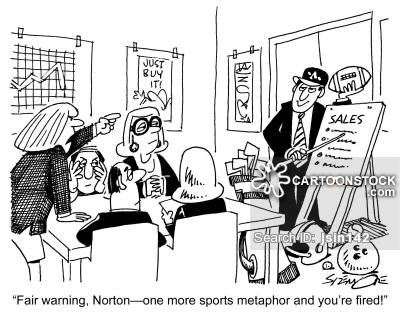![[Source: CartoonStock ]](https://fabbaloo.com/wp-content/uploads/2020/05/BusinessSolutions1_img_5eb0982922664.png)
Charles R. Goulding and Preeti Sulibhavi of R&D Tax Savers discuss sales approaches in the 3D printing industry.
The 3D printing industry is a fragmented industry with numerous players that are new to selling and overly rely on traditional features and functions selling.
With features and functions (F&F) sales the 3D product salesperson focuses on touting the beneficial features of their equipment and/or materials and software and explains how their product offerings function. The more sophisticated and successful sales method is to understand the customers’ needs and offer tailored business solutions. Since few 3D printer sellers engage in business solution selling it is a clear way for 3D printing sellers to distinguish their offering.
The Lighting Industry Model
One industry where many participants made great progress converting from F&F selling to business solution selling is the lighting industry. The lighting industry made this conversion starting in 2005 and hasn’t looked back. Our tax firm worked with the lighting industry on 15,000 successful lighting projects using business solution selling and will use those examples to illustrate business solution selling for the 3D printing industry.
Business solution selling requires broader business knowledge and good listening in order to hear the voice of the customer. Business solution selling includes 1) Deeper understanding of customer vertical markets; 2) Product Leasing; and, 3) Taxation.
![[Parody of Glengarry Glen Ross by Michael Kupperman / Source: Condenaste ]](https://fabbaloo.com/wp-content/uploads/2020/05/BusinessSolutions2_img_5eb098298e5d3.png)
1. Understanding Customer Markets
Although the lighting industry has existed since the late 1800s, it continuously focuses on developing product for today’s new market opportunities. Some recent examples include infection-resistant fixtures for hospital environments, LED lighting solutions for cannabis growing, and lighting controls including IoT for the smart home. Although the 3D printing industry has certainly accomplished this with dental applications and jeweler applications, it needs to engage in more vertical market analysis. The lighting industry is at the center of the new lighting / 3D printing initiative at the Rensselaer Lighting Research Institute that is bringing together leading companies from both the lighting and 3D printing industries. This program will clearly introduce the 3D printing industry to the large lighting product market but perhaps equally as important they can see firsthand how the lighting industry uses business solution selling.
2. Leasing
Having a straightforward customer-friendly leasing program greatly expands product selling opportunities. The customer can easily be pre-qualified and then receive the 3D printing products they require merely by placing an order. Carbon, the fast-growing 3D printing industry disruptor, recognized this from the onset and only leases its 3D printing product line. Today many vendor purchasing systems are so burdensome they actually dissuade companies from making 3D product purchases. In the lighting industry, DLL, the large diverse product lessor and subsidiary of Rabo Bank, identified the major market opportunity in leasing lighting systems and created a business unit that strictly focuses on the lighting market. Two of the largest 3D printer sellers, namely GE and HP Inc., have decades of leasing and financing experience. They already have a large library of pre-qualified companies that are cleared to purchase 3D printing products immediately. Those 3D printing industry participants that don’t have a leasing resource may want to consider partnering with a lessor that is interested in participating in the 3D product market. Leasing also provides the opportunity to bundle other vendors’ products. For example a customer project may require 3D printers plus other equipment such as CNC machines, injection molding equipment, collaborative robots and even another vendor’s 3D printing products. A lessor can package everything into one master lease.
3. Tax Incentives
3D printer product purchasers are typically manufacturers and/or design firms that are entitled to R&D tax credits at the federal and state level in 40 states. Startup 3D printer product companies may be eligible for up to $250,000 per year in cash rebates. The 3D printer seller that references tax incentives will distinguish themselves from other sellers. Our experience is that the lighting seller familiar with tax incentives far outperformed their peers who were unfamiliar with the lighting incentives.
The Research & Development Tax Credit
Enacted in 1981, the now permanent Federal Research and Development (R&D) Tax Credit allows a credit that typically ranges from 4%-7% of eligible spending for new and improved products and processes. Qualified research must meet the following four criteria:
-
Must be technological in nature
-
Must be a component of the taxpayer’s business
-
Must represent R&D in the experimental sense and generally includes all such costs related to the development or improvement of a product or process
-
Must eliminate uncertainty through a process of experimentation that considers one or more alternatives
Eligible costs include U.S. employee wages, cost of supplies consumed in the R&D process, cost of pre-production testing, U.S. contract research expenses, and certain costs associated with developing a patent.
On December 18, 2015, President Obama signed the PATH Act, making the R&D Tax Credit permanent. Beginning in 2016, the R&D credit has been used to offset Alternative Minimum Tax (AMT) for companies with revenue below $50MM and now, startup businesses can obtain up to $250,000 per year in payroll tax cash rebates.
Conclusion
Our view is that 3D printing sellers who evolve from feature and function selling to business solution selling will be much more successful. We also believe they will have fun doing it.











